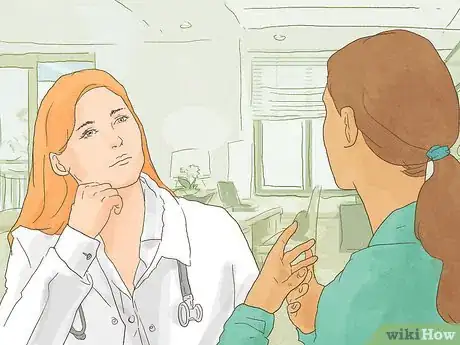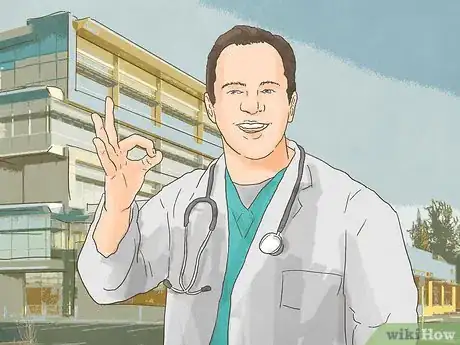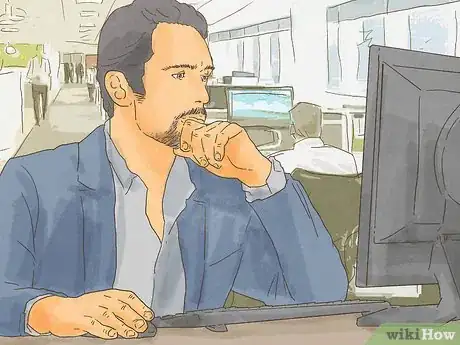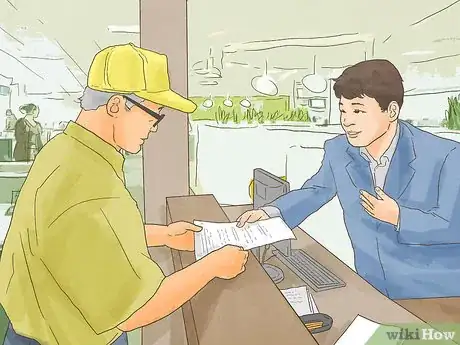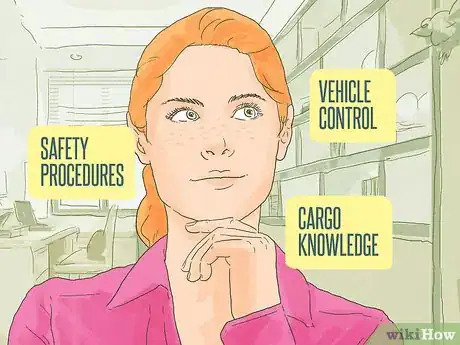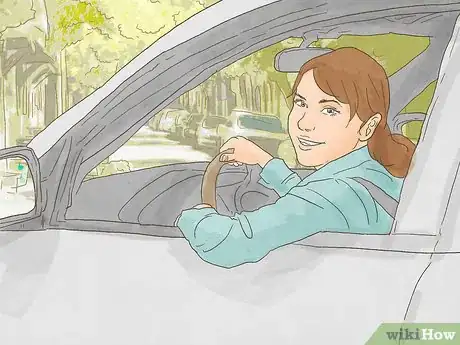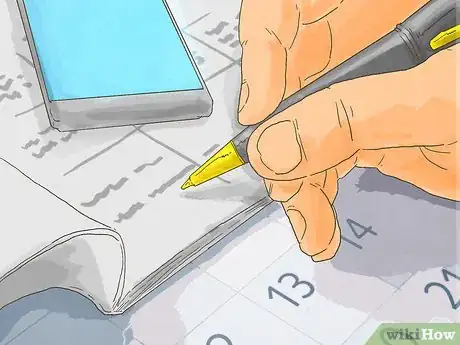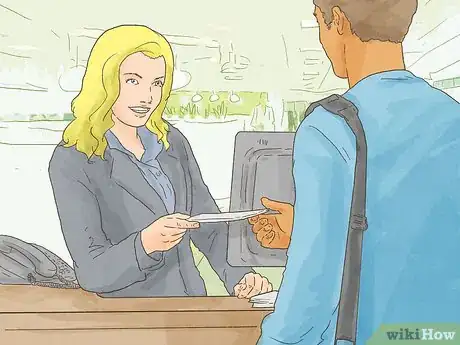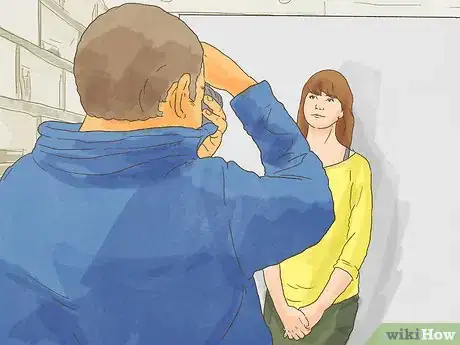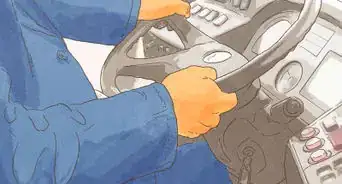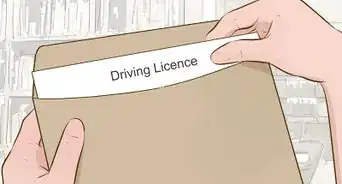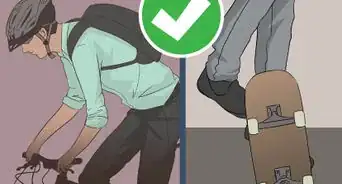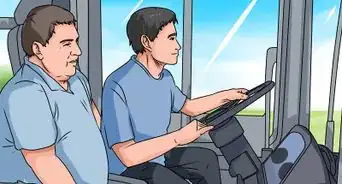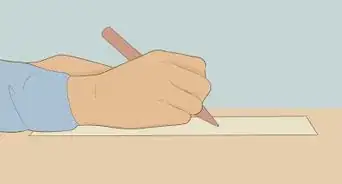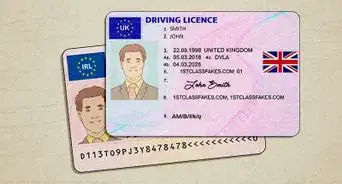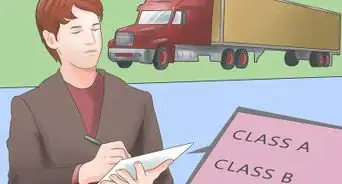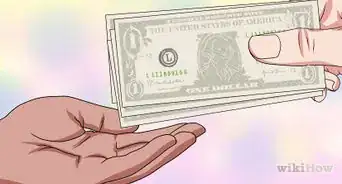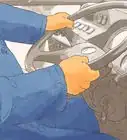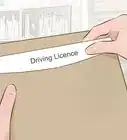This article was co-authored by Clinton M. Sandvick, JD, PhD. Clinton M. Sandvick worked as a civil litigator in California for over 7 years. He received his JD from the University of Wisconsin-Madison in 1998 and his PhD in American History from the University of Oregon in 2013.
There are 9 references cited in this article, which can be found at the bottom of the page.
wikiHow marks an article as reader-approved once it receives enough positive feedback. In this case, 87% of readers who voted found the article helpful, earning it our reader-approved status.
This article has been viewed 196,124 times.
To get a Commercial Driver License (CDL) in the state of New York, you will need to have a valid NYS driver license or a valid CDL from another state. To be eligible to receive a commercial driver license in New York, you must have a clean driving record free of violations. You must also certify that you do not have specific medical conditions that prohibit you from operating commercial vehicles. A CDL is not required to drive a fire truck, RV, or farm vehicle, but depending on the weight of the vehicle, an endorsement and road test may be required. Update (09/27/2022): Governor Kathy Hochul, in response to the school bus driver shortage, announced the state will allow third parties approved by the DMV to conduct CDL road tests. This article will change when new information is available.[1]
Steps
Determining Your Driving Requirements
-
1Meet the requirements for a New York CDL. You must be at least 18 years of age, a resident of New York State, legally present in the United States, and possess a valid driver's license in New York State (Class D or Class E), or from another state.[2]
- You must be at least 21 years of age to operate a commercial vehicle outside New York State (interstate commerce) or for a Hazmat and School Bus endorsement.
- If you are a new resident of New York State with a valid CDL from another state, you must exchange your license. You do not need to take the tests you already passed in your former state except Hazardous Materials.
- You must be able to read in English to understand the signs directed at commercial vehicles.
- You must be legally present in the United States (undocumented residents are only allowed to obtain a regular or motorcycle driver's license, but not a CDL).
- You will need a DOT medical certificate. In order to get one, you must see a medical examiner who is listed on the National Registry of Certified Medical Examiners and pass a physical examination to obtain the certificate.
- You will not be eligible to apply for a CDL if you have any of the following on your driving record:
- leaving the scene of an accident
- violations involving alcohol and/or drugs
- felonies involving a motor vehicle
-
2Determine what class you'll need. Drivers with a higher class of CDL may drive any vehicle from the lower class that does not require an endorsement. If an endorsement is required, you must have it or you cannot drive. You also cannot drive vehicles that would violate your restrictions. On 14 May 2022, the law was changed to allow 18 to 20-year-olds to drive Class A vehicles within New York. Previously, the law only allowed this age group to drive vehicles in Class B and C, but required Class A drivers to be at least 21 years old.
- If you want to drive a combination of vehicles with a total combined weight of more than 26,000 lbs providing the towed vehicle is more than 10,000 lbs, you must have Class A.
- If you want to drive a single vehicle of more than 26,000 lbs (you can tow a vehicle of more than 10,000 lbs as long as the total combined weight of the two vehicles does not exceed 26,000 lbs), you must have Class B.
- If you want to drive a single vehicle of 26,000 lbs or less (you can tow a vehicle of more than 10,000 lbs as long as the total combined weight of the two vehicles does not exceed 26,000 lbs) that requires a CDL endorsement, you must have Class C.
Advertisement -
3Determine whether you will be driving interstate or intrastate. Federal regulations require you certify your intentions of driving a commercial motor vehicle in interstate or intrastate commerce, with the latter being more restrictive. Younger drivers can only operate commercial vehicles within New York until they turn 21 years old.[3]
- Interstate commerce means you will drive a commercial motor vehicle in any state including New York or into a foreign country or transport cargo that began or will end its journey in another state or foreign country.
- Intrastate commerce means you will drive a commercial motor vehicle only in New York.
-
4Determine whether you apply as Excepted or Non-Excepted. Non-Excepted drivers are required to renew their health certificate every two years by passing a physical. Excepted drivers do not need a health certificate, but the opportunities are much more limited.[4]
- Excepted commerce is generally limited to the transport of people and farm goods, such as farm machinery, supplies, and crops. Visit the DMV website here for a complete list.
- Non-Excepted commerce categories include all other driving purposes than the ones listed under the Excepted category. If you drive for both Excepted and Non-Excepted activities, you must select Non-Excepted.
-
5Ensure you qualify for medical certification. Federal regulations require all CDL holders who operate under the non-excepted commerce category to have a Medical Examiner’s Certificate.[5] and renew it every two years. People with certain medical conditions may have to renew annually. Talk with your physician to help you determine whether your health status is acceptable for a CDL.
- There are certain restrictions placed on commercial drivers. You will need to disclose certain medical conditions, including:
- Seizures or epilepsy
- Eye disorders or diseases (but not glasses or contact lenses)
- Heart disease or heart attack
- Lung, kidney, liver, or muscular disease
- Fainting, dizziness, or loss of consciousness
- Sleep disorders (e.g., narcolepsy)
- Stroke or paralysis
- Missing limbs
- Alcohol, narcotic, or habit-forming drug use
- If you take medications, you must disclose this information to the medical examiner. Some medications may prevent you from driving a commercial vehicle unless your prescribing doctor writes a letter to the medical examiner clearing you. The medical examiner does not have to take your doctor's advice.
- If you do not renew a certificate when it's due, the state will suspend your CDL privileges until you submit the new certificate within 55 days before they downgrade your CDL to a regular (Class D) driver's license. You cannot legally drive a commercial vehicle while your CDL is suspended (you can get arrested).
- There are certain restrictions placed on commercial drivers. You will need to disclose certain medical conditions, including:
Preparing to Get Your CDL
-
1Study the CDL manual. The manual can be obtained free at an office or viewed online. Click here for a list of DMV Call Center numbers to request a manual. The manual contains all of the information you need to pass the tests. You may also opt for practice tests but many questions on the actual test use a different wording.[6]
- The questions are designed by New York State who frequently rewords the questions to prevent those who didn't read the manual from passing (i.e. only used practice tests to get out of reading the manual). You must answer at least 80 percent of the questions correctly to pass all of the tests.
-
2Obtain a Medical Examiner’s Certificate. You must have a registered Medical Examiner certify your vision, hearing, blood pressure, and general physical condition before you can apply for a CDL or learner permit.[7] Your healthcare provider may be on this registry, but you should double-check before scheduling a physical examination to make sure that your provider has a National Registry number. The New York DMV will reject certificates that don’t have a National Registry number.
- Beginning on May 21, 2014, all USDOT Medical Examiner’s Certificates must be provided by an examiner on the National Registry of Certified Medical Examiners. You can find that registry here.
- Check with your employer. Some employers may cover the fee associated with getting this certificate.
-
3Know what documents you need. You must bring several items with you to the DMV as proof of your identity before you take the knowledge test.[8]
- Bring your existing driver license and your Social Security Card for proof of identity. You must also bring 2 additional documents, such as utility bills or pay stubs, that display your full legal name.
- Bring a total of $50 to pay fees. The application fee for the learner permit is $10. This fee allows you to take the written tests. The fee for the road test (skills test) is $40. You must pay this fee before you may schedule your road test. The DMV accepts cash, credit cards, and checks or money orders.
- If you are transferring your license from out of state, you will need to bring a $10 application fee and a licensing fee. Licensing fees will vary depending on your age and commercial driving class.
- Bring a completed Medical Certification Requirements for Commercial Drivers form. You will also need to bring a Medical Examiner's Certificate that proves you are fit to drive a commercial vehicle. You must pass a physical examination every 2 years to maintain a commercial driver license in the state of New York.
-
4Pass all applicable knowledge tests. You cannot start until you pass all of the knowledge tests you need to obtain a commercial learner's permit (CLP). All classes require you to pass the General Knowledge Test, but Class A also requires the Combination Vehicles test. Almost every Class A and Class B vehicle has Air Brakes so you'll have to pass the Air Brakes exam to avoid an Air Brake restriction on your permit. The tests are administered on a touch-screen monitor. You can skip a question to return to it after answering the other questions. It is automatically scored so you'll know if you passed or failed when finished.
- The Passenger and/or School Bus endorsements include a special skills test which if passed will allow you to drive both buses and trucks. These tests can be taken to obtain your original CDL or after.
- A Passenger endorsement is required to drive a bus, transport at least 16 passengers, or apply for a School Bus endorsement. You must pass the knowledge test for the endorsement and skills tests to avoid restrictions on your license.
- A School Bus endorsement is required to drive a School Bus. You must be at least 21 years of age, have the Passenger endorsement, and pass the knowledge test for the endorsement and skills test to avoid restrictions on your license.
-
5After passing, get your commercial learner's permit. After you pass all of the applicable tests along with your documents, you will be able to get a commercial learner's permit (CLP) that would allow you to practice driving with a person who is at least 21 years old and has the same class as you or a class higher than yours, and the endorsements that you’re applying for. Your CLP is valid for 180 days. If it expires, you can renew it only once. After the renewed permit expires, you must pass the knowledge tests all over again.
-
6Complete the Theory Portion of Entry-Level Driver Training (ELDT). Those who obtained or renewed their Class A or Class B CLP on or after February 7, 2022, must complete the new ELDT prior to taking their skills test. Click here for a list of approved driving schools or online schools that can give you the theory portion instruction.
- If you obtained or renewed your Class A or Class B permit before February 7, 2022, skip Steps 6 and 7. You are not required to complete ELDT as long as you obtain your CDL before the permit expires. If it does, you will have to complete it.
- If you are required to complete ELDT, you will learn the following topics in the theory portion which will be on your quiz that you must pass:
- Safe operations regulations and commercial motor vehicle safety control systems
- Safe vehicle control (control systems, basic control, shifting, backing, visual search, communication, speed management, space management, night operation, extreme driving conditions, hazard perceptions, emergency maneuvers, skid control and recovery)
- Relationship of cargo to vehicle control
- Vehicle inspection
- Hazardous materials knowledge
- Air brake knowledge
- (Class A only) tractor/trailer coupling and uncoupling
- (Buses only) Emergency exits and passenger items
-
7Complete the Behind The Wheel Training of ELDT. While there are no minimum hours of training required, you and your instructor will learn how to control the commercial vehicle and improve your turning and judgment skills to make you a safer and better driver. Those who obtained or renewed their Class A or Class B CLP on or after February 7, 2022, must also complete this step prior to taking their skills test. Click here for a list of approved driving schools that can give you the behind-the-wheel training portion.
- If you obtained or renewed your Class A or Class B permit before February 7, 2022, skip Steps 6 and 7. You are not required to complete ELDT as long as you obtain your CDL before the permit expires. If it does, you will have to complete it.
Getting your CDL
-
1Schedule an appointment for the road test. Once you’re comfortable and confident with your road skills, you should schedule an appointment to take your road test. You can schedule the road test online at the New York DMV website.[9] You can also schedule a road test via phone by calling 1-518-402-2100. (This number operates 24/7.)
- You must pay the $40 fee before you can schedule a road test. You can pay that fee in person when you apply for your CDL learner permit, or you can pay it online with a credit card.
- When you make the appointment, you will be required to provide the Client ID number displayed on your learner's permit and the receipt number that was given to you when you paid the road test fee.
-
2Pass the Skills Test. The Skills Test is the final step is required to get your commercial driver's license (CDL). You must schedule your Skills Test, pay a $40 fee, and arrive on time. As of 27 September 2022, New York State now allows third party driving schools or entities, approved by the DMV, to administer the skills test. This means you can choose to be tested by the DMV or by an approved third-party examiner. It is recommended you go with a third party, as the DMV wait times can be very long, you will have to bring a commercial vehicle, and despite giving CDL road tests, DMV examiners are not required to have a CDL (this means if you're stopped by a police officer during the road test, they may cite you for not having a licensed supervisor with you).
- For the Pre-Trip Inspection and In-Cab Inspection, you must know where every item of your bus or truck is and explain to the examiner why you would inspect it. For the In-Cab inspection, you must know how to test your Air Brakes.
- For the Basic Vehicle Control, you will be asked to back a bus or truck in a straight line without hitting the cones along with two different maneuvers that will be decided by your examiner. It may be an offset (right or left), parallel parking (right or left), or the most challenging alley docking. Except for the straight line backing, you are allowed to pull up or get out of the vehicle up to two times (after with penalty) without being penalized to get a better glance or position.
- For the Road Test, you will be asked to drive on public roads and highways. Your examiner will evaluate how you make turns, judgments, or use your signals. Any error will result in points. Too many points will result in a failure. You must pay attention to the signs because the examiner may ask you what the sign said as part of your test. The examiner will also ask you to complete a railroad crossing and in the middle of the test, stop at a safe location to see how far you are from the curb. They may also ask you how much the bus or truck weighs, the height, or the width.
-
3Wait one business day after passing your road test before visiting the DMV office. After you pass the road test, you will receive a "Road Test Results" Receipt. However, as of May 23, 2014, this no longer gives you permission to drive. You must wait one day before visiting a DMV office with this receipt to pay for and receive your Commercial Driver License document.[10]
- The New York DMV no longer issues 10-day temporary license documents. You will get a temporary CDL valid for 90 days that you can use until your photo CDL arrives by mail. It should arrive within 3-4 weeks.
- Bring your Medical Examiner's Certificate every time you visit the DMV regarding your CDL to avoid processing delays.
-
4Keep your license up-to-date. The requirements for renewing your CDL are the same as for renewing a regular driver license except for the medical certification requirements. You must present your medical certificate each time you renew your license. You can’t renew a CDL online.[11]
- In New York, driver licenses expire on your birthday. The DMV will send you a renewal notice about 50 days before the expiration date, along with a self-certification form for your driving type (Excepted or Non-Excepted). You can renew your CDL up to one year before it expires.
- If you renew your license before it expires, you don’t have to take the written or road test again.
Warnings
- Do not purchase any "cheat sheets" online purporting to give you all the answers to the knowledge test, it is a scam.⧼thumbs_response⧽
- You cannot use cannabis. While it is legal in New York, commercial vehicles are regulated by federal law where cannabis is still prohibited. There is no exception for medical use.⧼thumbs_response⧽
- It is a federal and state crime to possess a CDL from multiple states. You should only have a CDL from the state you reside in. If you move to New York, you must exchange your former state CDL for a New York CDL.⧼thumbs_response⧽
References
- ↑ https://cbs6albany.com/news/local/nysdmv-training-more-third-parties-to-conduct-cdl-road-tests-amid-driver-shortage
- ↑ http://dmv.ny.gov/get-cdl
- ↑ http://dmv.ny.gov/commercial-drivers/interstate-or-intrastate-driving
- ↑ http://dmv.ny.gov/commercial-drivers/excepted-or-non-excepted-driving
- ↑ http://dmv.ny.gov/commercial-drivers/cdl-medical-certification-requirements
- ↑ http://dmv.ny.gov/commercial-drivers/new-york-state-commercial-drivers-manual
- ↑ http://www.fmcsa.dot.gov/sites/fmcsa.dot.gov/files/docs/Medical_Examination_Report_for_Commercial_Driver_Fitness_Determination_649-F%286045%29.pdf
- ↑ http://dmv.ny.gov/get-cdl
- ↑ https://dmv.ny.gov/schedule-road-test
About This Article
To get a commercial driver license (CDL) in New York, study the CDL manual to prepare for a written test, which you need to pass to get a license. Next, get a registered medical examiner to give you a medical certificate, as this is a requirement when applying for the license. Once you've passed the written test, practice driving with someone who already has a CDL. Finally, pass the road test by showing your skills in areas including safe vehicle control and vehicle inspections to get your license. For tips on how to schedule the road test and how to keep your license up to date, keep reading!




